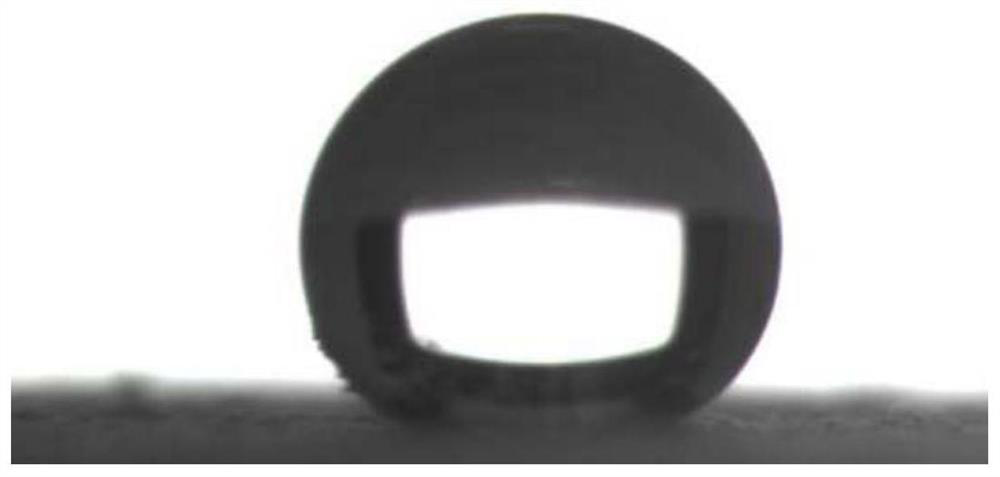A kind of halogen-free flame retardant with high fluidity and resistance to precipitation and its preparation method and application
A high fluidity, flame retardant technology, applied in the field of flame retardant composition, can solve problems affecting processing performance, large charge of powder, bridging and broken bars, etc., achieve excellent flame retardant performance and simple preparation process , the effect of improving liquidity
- Summary
- Abstract
- Description
- Claims
- Application Information
AI Technical Summary
Problems solved by technology
Method used
Image
Examples
preparation example Construction
[0054] The preparation process of the above-mentioned high fluidity and resistance to precipitation halogen-free flame retardant is:
[0055] (1) Preparation of powder body of halogen-free flame retardant:
[0056] Put piperazine phosphate, melamine and derivatives and inorganic metal zinc compounds into a 300L high-speed mixer with a preheating temperature of 80-120°C according to the formula, mix at a low speed of 250-600rpm for 5-30min, remove the moisture in the material, and then Turn to high speed 800~1200rpm and mix to obtain the powder body of the halogen-free flame retardant;
[0057] (2) Preparation of surface treatment agent:
[0058] The surface treatment agent is obtained by dispersing the lubricant into the silicone oil substance;
[0059] (3) Preparation of halogen-free flame retardant:
[0060] The prepared surface treatment agent is added to the high-speed mixer equipped with the powder body of the halogen-free flame retardant by spraying or dripping, the t...
Embodiment 1
[0078] A halogen-free flame retardant with high fluidity and resistance to precipitation. In a 300L high-speed mixer at 120°C, mix at a low speed of 475 rpm for 10 minutes to remove the moisture in the material (the water content is reduced to less than 0.1%), and then turn to a high speed of 1000 rpm for mixing, and the silicone oil dispersed with the lubricant is uniformly passed through the spray device. Sprayed into the kettle, mixed at high speed for 15min, then cooled and discharged to obtain a well-mixed composite flame retardant system with surface treatment. The obtained powder and material test results are shown in Table 1; the viscosity of the silicone oil used in this example is 50mPa. s.
Embodiment 2
[0080] The implementation process is the same as in Example 1, except that the preheating temperature of the 300L kettle is 150° C., and the high-speed mixing time is 5 minutes during the surface treatment process except for the compound flame retardant. Other materials and proportions are shown in Table 1, and the obtained powder and material test results are shown in Table 1. The viscosity of the silicone oil used in this example is 60 mPa·s.
[0081] The hydrophobicity of the surface-treated flame retardant obtained in this example is tested, and the contact angle photo of the halogen-free flame retardant is obtained, such as figure 1 As shown in the figure, it was found that distilled water was distributed in the form of beads on the surface of the flame retardant powder, and the contact angle was 160°, indicating that the powder had better hydrophobicity.
PUM
| Property | Measurement | Unit |
|---|---|---|
| viscosity | aaaaa | aaaaa |
| viscosity | aaaaa | aaaaa |
| viscosity | aaaaa | aaaaa |
Abstract
Description
Claims
Application Information
 Login to View More
Login to View More - R&D
- Intellectual Property
- Life Sciences
- Materials
- Tech Scout
- Unparalleled Data Quality
- Higher Quality Content
- 60% Fewer Hallucinations
Browse by: Latest US Patents, China's latest patents, Technical Efficacy Thesaurus, Application Domain, Technology Topic, Popular Technical Reports.
© 2025 PatSnap. All rights reserved.Legal|Privacy policy|Modern Slavery Act Transparency Statement|Sitemap|About US| Contact US: help@patsnap.com



